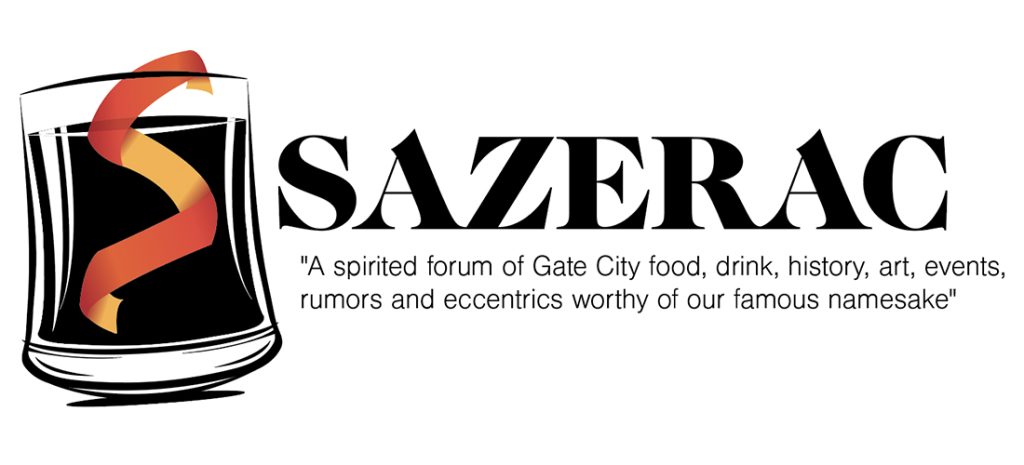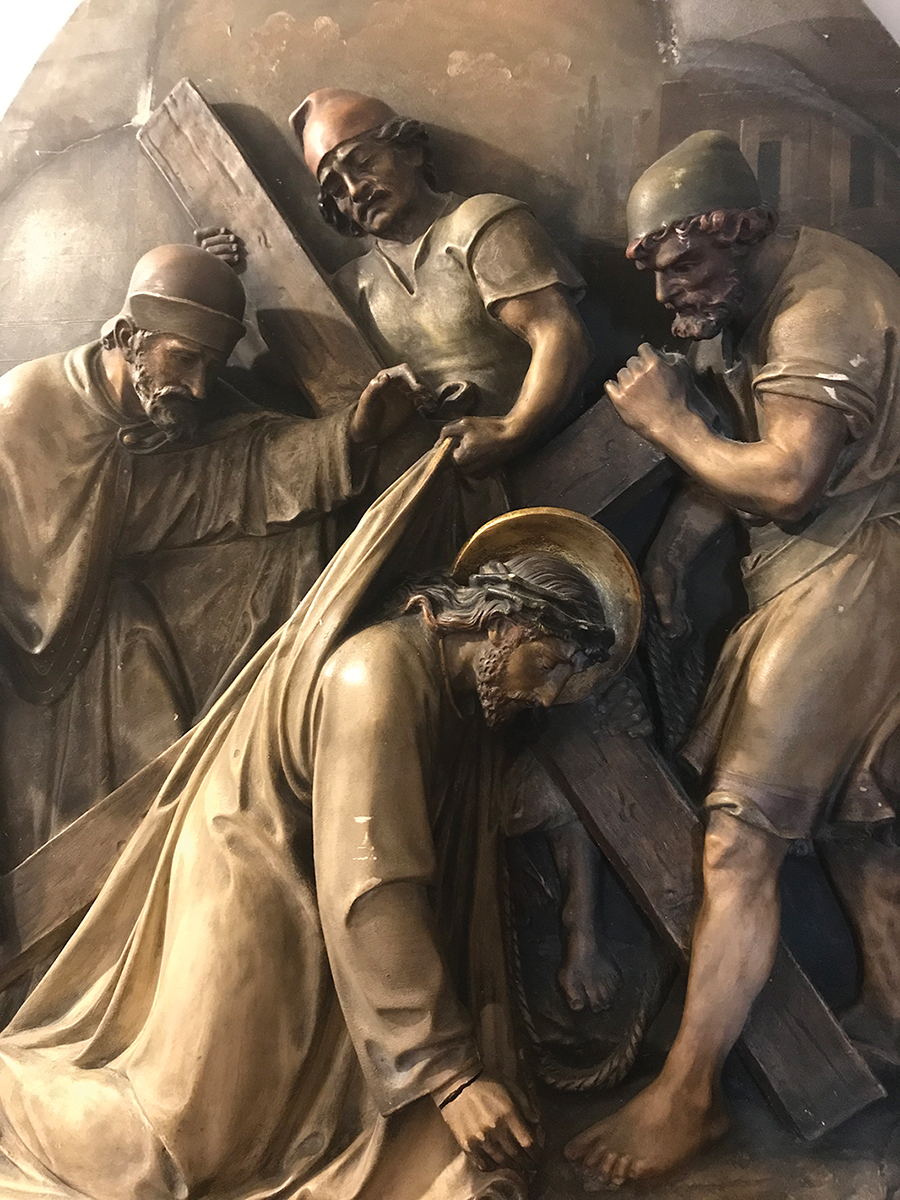Sazerac April 2023

Sage Gardener
We were, in fact, eating some freshly-picked, beautiful, blue-green Lacinato kale, aka dinosaur kale. My dining partners were impressed, but what they didn’t know, and soon learned, was how runty our plants were. “You should have ordered the Walking Stick kale,” says my wife, Anne, grabbing our dog-eared copy of the Baker Creek Heirloom Seeds catalogue. There, pictured in the kale section, was a gray-whiskered gardener atop a teetering ladder, plucking kale from a 20-foot-high stalk.
It’s that time of year when brown grass gets browner every day while multicolor splashes of brilliant Pippin’s Golden Honey peppers, Kyoto Red carrots and kaleidoscopic Glass Gem popping corn jump right off the catalogue pages into our imagination. “I planted Glass Gem popcorn and the ears were the size of your thumb,” one dinner guest says. And we’re off, all of us digging up dirt on seeds that have let us down by only sprouting disappointment: the oh-so-challenging ramp and garlic seeds; the Dutchman’s pipe seeds, terribly expensive and requiring three months of refrigeration and six months’ germination — before dying; the Amazing Grey Poppies that did anything but amaze; caper seeds; miner’s lettuce and even pine nut seeds. “How much of it is our trying to grow something that’s never meant to thrive in our soil and climate?” another dinner guest wonders. “Probably, but I feel so betrayed when I compare my plants to the ones in the catalogue. Worse yet, I feel like such a bad gardener,” Anne admits. “Does that mean you decided not to buy the package of 1,500-Year-Old Cave Beans?” I wonder. “They’re already in the mail,” Anne says.
— David Claude Bailey
Window to the Past

Photograph © Carol W. Martin/Greensboro History Museum Collection
“Gimme all your eggs and nobody gets hurt.”
How I Saved Jesus

There are countless stories of wayward souls saved by Jesus Christ. But did I ever tell you the story of how this irredeemable sinner rescued Jesus?
Cinematographer Philip Dann retrieved this magnificent depiction of one of the stations of the cross from a construction dumpster. There were originally 14 of these detailed monuments — this one being the ninth station, divinely depicting Christ’s suffering at the hands of Roman soldiers.
Dating back to the 1930s, it weighed about 60 pounds and was sculpted in painted plaster mounted on a solid wood backing. Sadly, only three of the stations survived. It seems an old church along the Carolina coast that was modernizing and renovating felt these magnificent dioramas were too old fashioned — so they just chucked them, most reduced to rubble. Can you imagine?!?
Philip pulled the three less severely damaged sculptures out of their ignominious resting place and gave them a brief cameo in a 2012 motion picture I performed in, Lake of Fire.
On the last day of filming I was asked to take those three sculptures home since they had no place to reside. Of course, I said no. I mean, these things were huge and would dominate any space, plunging a room’s Feng Shui into total turmoil!
After a moment of reflection I realized I couldn’t let something so unique and symbolic end up on Storage Wars. Or worse in some frat house, converted into a beer bong. So I rescued the most dramatic depiction, which now sits in my Time Tunnel-esque hallway, serving as a nifty conversation starter.
— Billy “Mr. Sanctimonious” Ingram
Just One Thing

Steisha Pintado, The Fruit of Goodness, 2019. Acrylic and fabric on paper, 32”x32”. Courtesy of the artist. © Steisha Pintado, 2019.
Artist Steisha Pintado, whose work can be seen as part of the Weatherspoon Art Museum’s 2023 UNCG MFA Thesis Exhibition, recalls her childhood as one of “isolation, guilt and fear.” After years of feeling as if her life was “predetermined and designed around being a Jehovah’s Witness,” Pintando left the church and now explores her narrative through her interdisciplinary work, including drawing, painting, puppetry and animation. The Fruit of Goodness, a multimedia acrylic-and-fabric on paper, is about Pintado’s coming to terms with realizing that the paradise that was promised to her as a child is fictional. The colors in this particular piece were informed by childhood nostalgia and amplified by films such as Charlie and the Chocolate Factory and The Wizard of Oz in which the palettes are “sickeningly sweet” while sinister forces lurk underneath. Now using her voice and art as expression, Pintado says, “I make this work for myself, for others who have also had these experiences and to create a public awareness around these issues.” The MFA exhibit opens April 22. Info: weatherspoonart.org/exhibition-2023-mfa.
Unsolicited Advice

Unless your bunny is highfalutin, it’s likely that your yard will be filled with nothing but rabbit, um, pellets on Easter morning. We came up with some alternative solutions that the E.B. can stash in your gardens.
Painted rocks. Who doesn’t love a colorful stone, especially with a motivational “You rock” message? And Easter Rocks-travaganza has a nice little ring to it. Better yet, don’t paint them. Don’t even hide them. Tell the kids the bunny hid rocks and watch them go to town with nature’s bounty.
Socks. So that’s where all the missing socks are. You can even use that hopeful easter egg dyeing kit you bought in January to color them in spring pastels. They pair perfectly with Crocs.
Peeps. Trust us. No one wants those sugar-coated marshmallow fluffsters in their baskets. Don’t worry — none of God’s creatures are interested in munching on them either, so they’ll be safe. And you can likely find them for free. In your pantry, untouched from last year.
